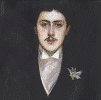Modern Languages and Literatures, Department of

French Language and Literature Papers
Document Type
Article
Date of this Version
September 2004
Abstract
Like his painter-contemporaries, Mallarmé’s attention to japonisme was to a visual phenomenon. Like them, he had a strong visual sense, and one could argue that even the early poems that tried to apprehend nothingness did so as if the problem were a visual one even if the results were more the ideas of things seen, rather than the creation of images. His visual orientation did change dramatically, however, by the time of La Dernière Mode in 1874, readying him for the acculturation to be provided first by Manet, and then by others, notably Whistler. The esthetics of japonisme is a strand that runs through this visual education from 1876 onwards and is tied to the poet’s development of a visual materialism that was independent of the image as practiced by his painter-contemporaries, and even independent of (and offering a counter poetics to) his other esthetic, the exalted ‘explication orphique de la Terre’. I submit that le japonisme is one of the threads we can use in following the later Mallarmé; as such, it provides an instance of how a contemporary visual idiom may be brought to the reading of an important development in the practice of literary modernism.
The images referenced in the article are available in the "Related files" above; the thumbnails in the ".doc" file are active links to the Dix-Neuf site.
doc file with thumbs and active links
Images-Japonnaise.pdf (1381 kB)
PDF file with thumbs


Comments
Published in Dix-Neuf 3 (September 2004): 18-33.Copyright 2004 Society of Dix-Neuviémistes. Used by permission. http://www.sdn.ac.uk/dixneuf/index.htm